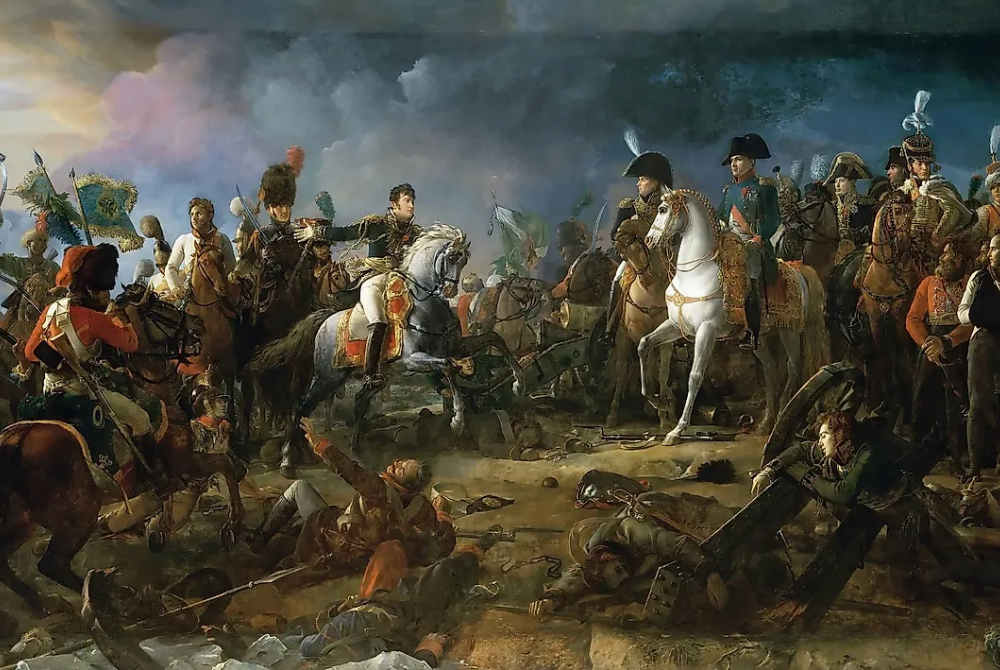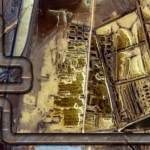Ancient military tactics like ambushes, flanking maneuvers, guerrilla warfare, and using terrain to advantage remain effective and are still employed in modern conflict, albeit adapted with current technology. The principles of achieving surprise, using choke points, or establishing defensive positions also persist, demonstrating the unchanging nature of warfare’s fundamental strategies.
Ancient Military Tactics Still Used Today
Ambush (9 CE) – From Teutoburg Forest to the Vietnam Jungle

The year was 9 CE. Rome stood at the height of its power, its legions feared across Europe and beyond. Yet deep in the Germanic wilderness, one man turned the empire’s might into weakness. Arminius, once a Roman auxiliary officer and trusted ally, became the architect of one of history’s most devastating ambushes.
Varus, governor of the province of Germania, led three legions—Legio XVII, XVIII, and XIX—along with cavalry and auxiliaries, a force of roughly 20,000 men. They marched westward through the unfamiliar, rain-soaked terrain of the Teutoburg Forest, believing Arminius to be their guide. But loyalty had turned to betrayal. Arminius had united the Cherusci and other Germanic tribes into a hidden army.
The attack came suddenly. From the dense undergrowth, thousands of Germanic warriors surged forward, hurling spears and arrows into the disorganized columns. Roman shields and formations, so effective in open ground, were useless on the narrow, muddy forest paths. Heavy rains turned the roads into swamps, supply wagons broke down, and morale collapsed. For three days, the Romans were harried from all sides. Panic spread as ambushes struck day and night, cutting down officers and separating units.
Varus, wounded and desperate, fell on his own sword rather than face capture. By the end, nearly every Roman was dead or enslaved. Seventeen thousand soldiers perished in the forest, three legions were annihilated, and their eagle standards—the sacred symbols of Roman pride—were lost to the tribes.
The political shock reverberated across the empire. Emperor Augustus, upon hearing the news, was said to wander his palace in despair, crying out: “Quinctilius Varus, give me back my legions!” The catastrophe ended Rome’s eastward expansion. The Rhine River became a permanent frontier, shaping the map of Europe for centuries.
But ambushes did not end with antiquity. In the 20th century, similar tactics reappeared in the jungles of Vietnam. Outnumbered and outgunned, the Viet Cong perfected the “L-shaped” ambush. Concealed in dense vegetation, they allowed American patrols to walk into a killing zone before opening fire with automatic weapons and explosives. Like the Germanic tribes, their goal was not annihilation in one blow, but constant attrition—death by surprise and erosion of morale.
The lesson across time is unshakable: even the strongest armies are vulnerable when surprise and terrain become weapons. In Teutoburg, an empire’s expansion was halted. In Vietnam, a superpower’s will to fight was weakened. The ambush endures as the timeless equalizer of war.
Guerrilla Warfare (3rd–2nd century BCE) – Scythians, Fabius, and the Shadow Wars
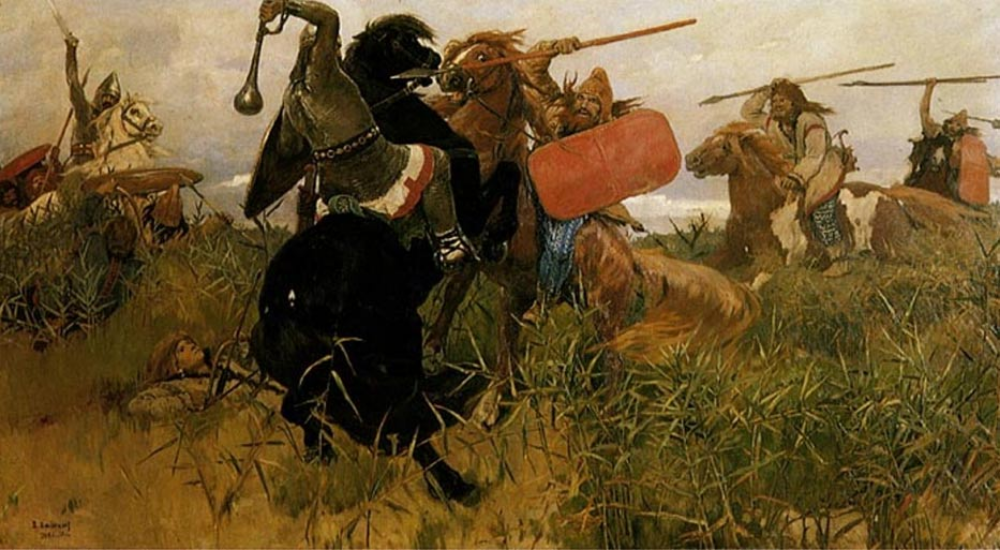
Long before the word guerrilla—Spanish for “little war”—was coined, the idea was already alive. In the 6th century BCE, the nomadic Scythians faced Persia’s mighty empire. Instead of meeting the Persians head-on, they retreated deeper into the steppe, burning crops and poisoning wells. Their mounted archers struck supply lines, then vanished into the endless plains. Persia’s vast army, starved and exhausted, collapsed without a decisive battle.
Two centuries later, another commander revived this approach. During the Second Punic War (218–201 BCE), Rome reeled from Hannibal’s victories. At Cannae, tens of thousands of Romans fell in a single day. Facing near despair, Quintus Fabius Maximus proposed a radical strategy: avoid open battle. Known later as the Fabian strategy, he harassed Hannibal’s forces, cut supply routes, and wore down the invaders. His critics called him cowardly, but time proved him right. Hannibal never marched on Rome.
The essence of guerrilla warfare is asymmetry—using mobility, terrain, and patience to bleed a stronger opponent. This idea carried into modern history. In China, Mao Zedong’s Red Army survived annihilation by melting into the countryside, launching hit-and-run raids, and cultivating support among peasants. In Afghanistan during the 1980s, the Mujahideen fought the Soviet Union with ambushes and raids in rugged mountains, where tanks and helicopters had limited power.
Guerrilla war is not just about soldiers but about people. Local support provides food, shelter, and intelligence. In Vietnam, the Viet Cong moved through underground tunnels, disappearing into villages after sudden strikes. Their strength lay not in weaponry but in knowing when to fight—and when not to.
From Scythians to Fabius, from Mao to the Mujahideen, guerrilla warfare proved that survival itself can be victory. Empires can collapse not from decisive battles, but from countless small wounds delivered in shadows.
Flanking and Encirclement (216 BCE) – Hannibal’s Masterpiece at Cannae
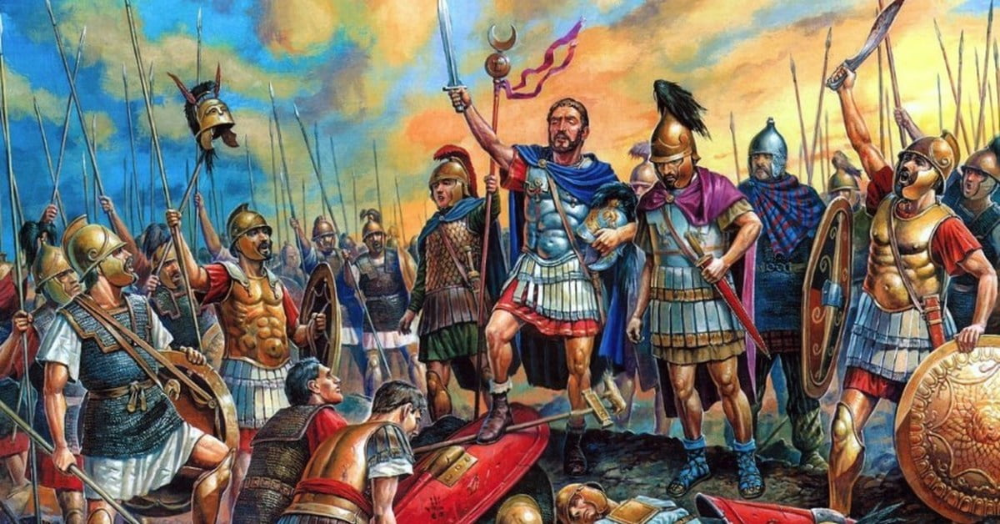
Few battles in history showcase the art of encirclement like the Battle of Cannae in 216 BCE. Hannibal Barca, the Carthaginian general, faced a Roman army nearly twice the size of his own—about 86,000 Romans against 50,000 Carthaginians. Rome expected to crush him with sheer numbers. Instead, they walked into a trap.
Hannibal arranged his forces in a crescent formation, placing his weaker infantry in the center and stronger African veterans on the flanks. As the Romans surged forward, his center slowly gave ground, drawing the legions deeper. Meanwhile, his cavalry, commanded by Hasdrubal, routed Rome’s horsemen and circled back. Then came the decisive moment: Carthaginian infantry on the wings pivoted inward, collapsing the Roman sides, while cavalry struck from behind.
In a matter of hours, Rome’s massive army was surrounded in a killing ring. Estimates suggest between 50,000 and 70,000 Romans were killed in a single day. Cannae became synonymous with annihilation, studied centuries later by generals from Frederick the Great to Schlieffen.
The principle of flanking endured. In 1940, German Panzer divisions bypassed France’s Maginot Line, swinging through the Ardennes to envelop French forces. This blitzkrieg was a modern double envelopment executed with tanks and aircraft instead of infantry and horses. In 1991, coalition forces in the Gulf War used a “left hook” flanking maneuver, sweeping through the desert to trap the Iraqi army in Kuwait.
The logic is timeless: strike not at the enemy’s strength but at their exposed sides and rear. At Cannae, Hannibal turned inferior numbers into one of history’s greatest victories. Modern commanders still dream of achieving their own “Cannae.”
Psychological Warfare (13th century BCE) – Fear as a Weapon
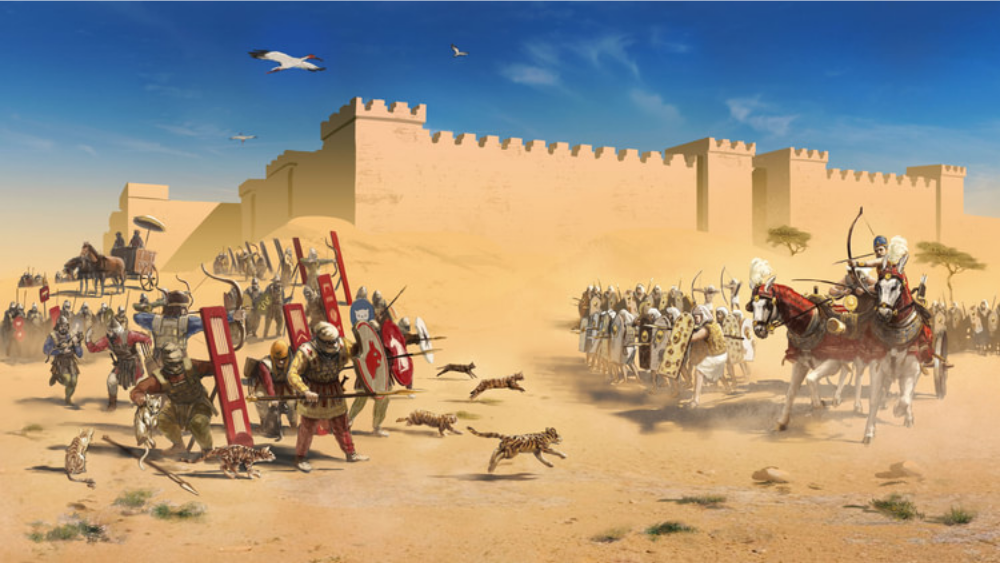
Not all wars are won with swords or spears. Some are decided in the mind. In the 13th century BCE, the Assyrians mastered psychological warfare. Their brutality was calculated—public displays of torture and impalement served as warnings, breaking resistance before battles even began. Terror itself became a weapon.
The Greeks refined deception in legend. The Trojan Horse, gifted to the people of Troy, was not a victory of force but of guile. By exploiting trust and pride, the Greeks won a war that brute strength could not end.
Even religion could be weaponized. In 525 BCE at the Battle of Pelusium, the Persians painted cats on their shields and drove animals onto the battlefield, knowing Egyptians revered them. Fear of harming the sacred paralyzed Egyptian defenders, and the Persians won the day.
In the modern era, psychological operations—psyops—evolved. During World War II, leaflets and broadcasts urged enemy troops to surrender. In 1942, the U.S. Office of War Information used films and propaganda to shape morale at home and abroad. Decades later, the doctrine of “shock and awe” in Iraq sought to overwhelm not just defenses but the will to resist, through displays of overwhelming firepower.
From Assyria to cyberspace, the aim is the same: to break the enemy without fighting. Sun Tzu’s words ring true after 2,500 years—“Supreme excellence consists in breaking the enemy’s resistance without fighting.”
Divide and Conquer (3rd century BCE) – Rome’s Secret Weapon
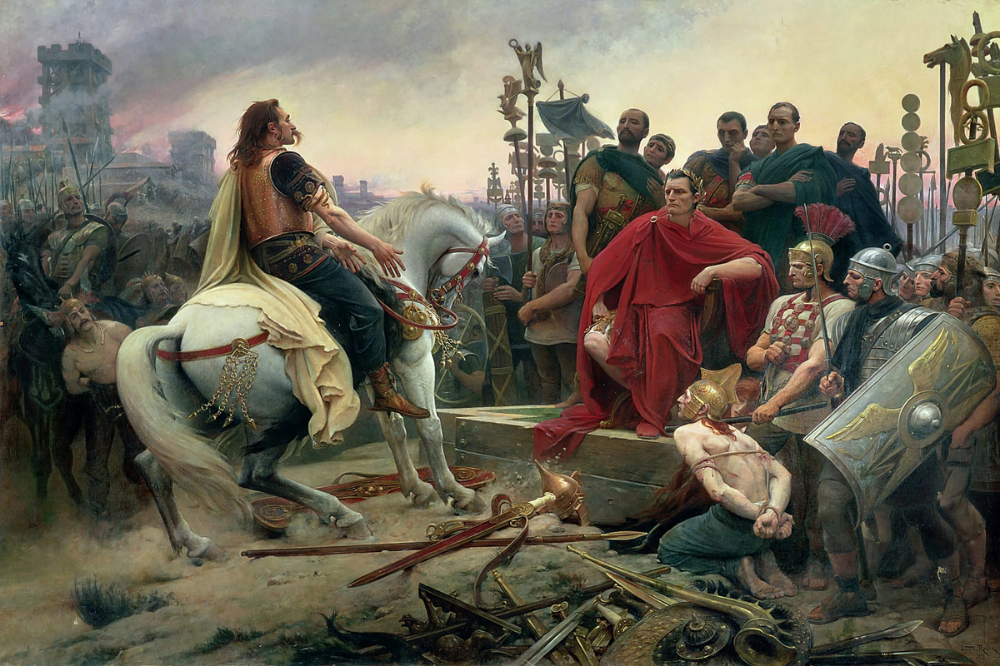
Philip II of Macedon gave the phrase divide and rule to history, but the Romans perfected it. As Rome expanded across the Italian peninsula in the 5th–3rd centuries BCE, they realized brute force alone was not enough. Instead, they fractured their enemies.
When Rome defeated a city, it avoided uniting the conquered under a single system. Instead, it offered separate treaties and unequal rewards: some allies gained tax exemptions or partial citizenship, others less. Rivals were kept suspicious of each other, too focused on Rome’s favor to unite against it. Conquered peoples were even forced to provide troops, ensuring they fought Rome’s wars against their neighbors.
This strategy worked brilliantly. By 264 BCE, Rome controlled nearly all of Italy south of the Arno. Later, during the Punic Wars, Rome’s alliances across Sicily and Italy kept Carthage isolated. Divide and conquer became Rome’s unseen army—alliances, diplomacy, and manipulation that secured control without endless battles.
The principle still applies. During the Iraq War, the U.S. provided support to rival tribes, weakening insurgent coalitions. In politics and business, the logic of fragmentation remains a tool for dominance.
Rome’s legions were powerful, but their true weapon was psychological: ensuring their enemies never stood together.
Scorched Earth (513 BCE) – Burning the World to Save It
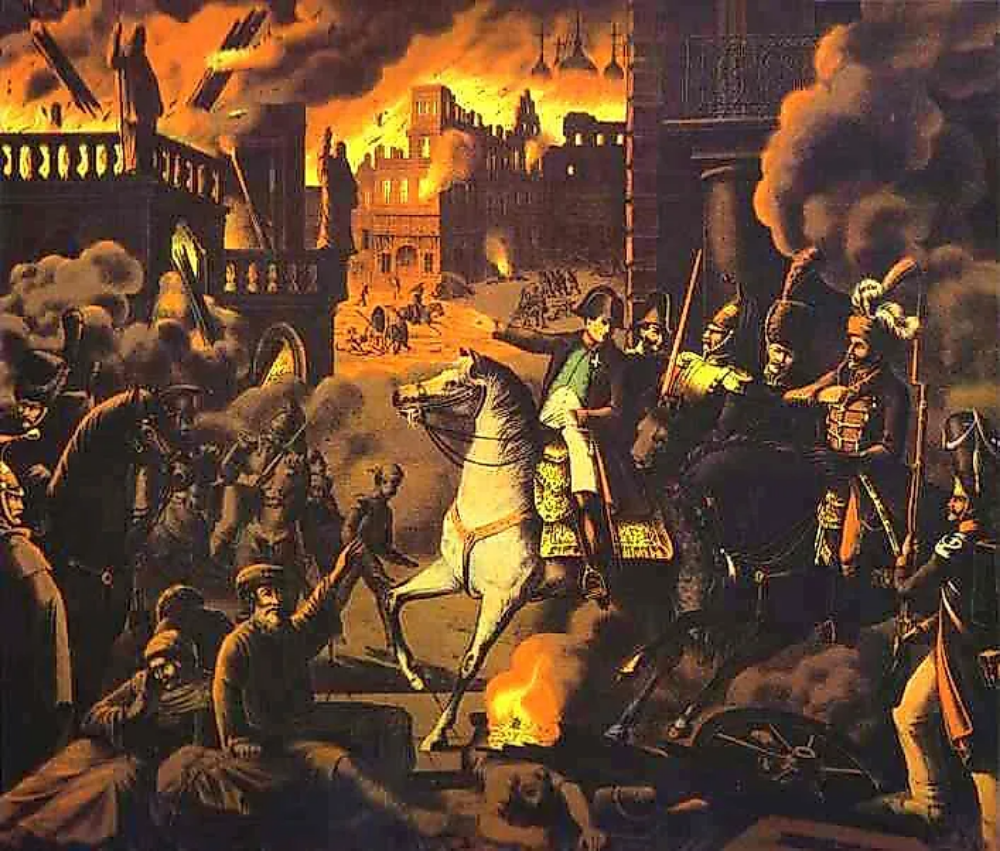
In 513 BCE, the Scythians faced Persia’s massive invasion under Darius I. Outnumbered and unwilling to fight directly, they destroyed everything the Persians could use—burning fields, slaughtering livestock, and poisoning wells. The Persians marched deeper into emptiness, harassed by mounted archers, until their campaign collapsed.
Centuries later, in 1812, Napoleon Bonaparte faced the same fate. As his Grand Armée of 612,000 men advanced into Russia, the Russians torched villages and supplies, even Moscow itself. When winter came, starvation and cold reduced Napoleon’s army to fewer than 112,000 survivors. In 1941, the Soviets again used scorched earth against Hitler’s advancing Wehrmacht, denying food and shelter across vast territories.
The tactic is cruel but effective: by destroying one’s own resources, the enemy is starved. It buys time, breaks morale, and can turn invaders’ strength into weakness.
Scorched earth reveals the darker truth of war—sometimes victory lies not in saving land but in sacrificing it.
Naval Blockades (332 BCE) – Cutting the Lifeline
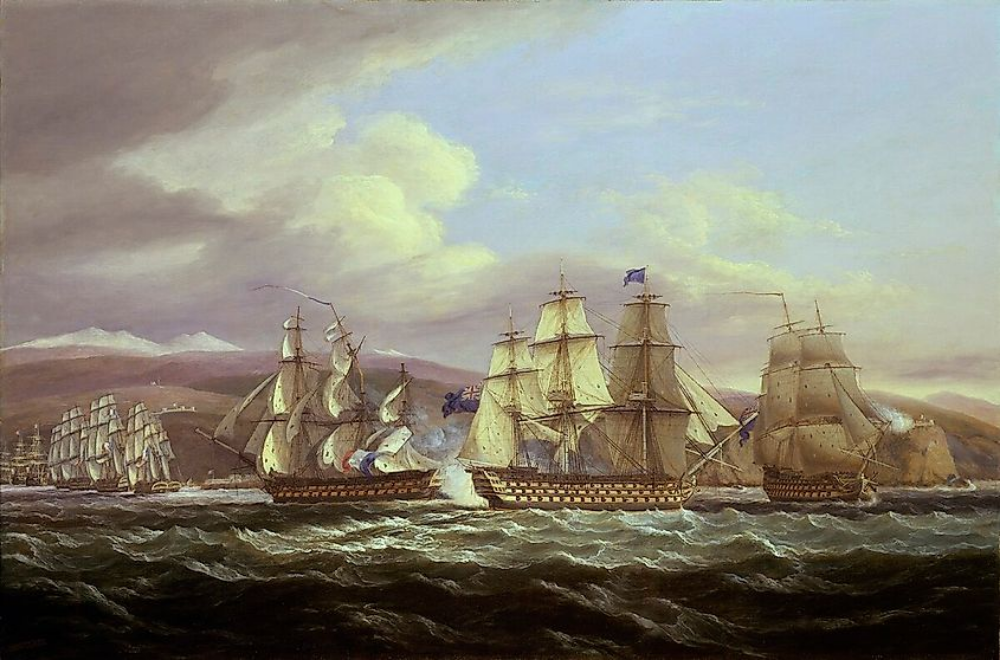
In 332 BCE, Alexander the Great besieged the island city of Tyre. The city’s walls rose from the sea, seemingly impregnable. Alexander’s solution was bold: he built a causeway across the water while deploying ships to blockade Tyre’s harbor. After seven months, the city, cut off from supplies and reinforcements, fell.
The logic of blockade endured. In the Napoleonic Wars, Britain’s Royal Navy strangled French trade, isolating Napoleon’s empire. During World War I, the Allied blockade of Germany caused severe shortages, contributing to the empire’s collapse. In World War II, German U-boats attempted to return the favor, sinking Allied supply convoys.
Today, blockades may not only be physical but digital. Cyber blockades target financial systems or supply chains, crippling economies without a shot fired.
To cut off supplies is to suffocate an enemy. Whether by sea or cyberspace, a blockade turns time itself into a weapon.
Siege Warfare and Fortifications (9th century BCE) – Breaking the Walls
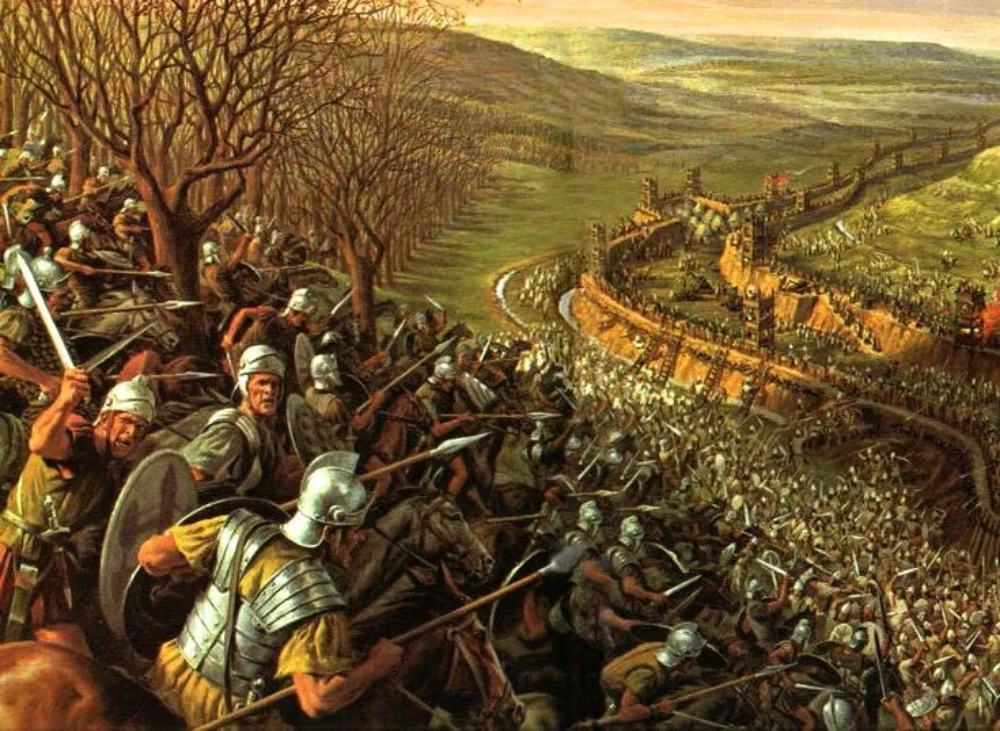
The Assyrians of the 9th century BCE pioneered siege warfare. They rolled massive battering rams covered with wet hides to resist fire, and wheeled towers that allowed soldiers to storm walls. They dug trenches and tunnels to undermine defenses. Cities that resisted were crushed by machines of relentless force.
Romans carried this tradition further. Julius Caesar’s siege of Alesia in 52 BCE remains legendary. To trap the Gauls inside while fending off reinforcements, Caesar built two rings of fortifications—one facing inward, one outward—stretching nearly 20 kilometers. After weeks of attrition, the Gauls surrendered.
The principle persisted. Medieval armies used trebuchets and sappers. World War I reinvented siege warfare with trench systems stretching hundreds of miles. Even in modern times, urban combat echoes ancient sieges—cities like Stalingrad or Aleppo turned into fortresses where walls of concrete replace stone.
Fortifications evolve, but so do the engines that break them. The duel of wall and ram, defense and siege, is as old as civilization itself.
Strategic Use of Terrain (480 BCE) – Holding the Gates
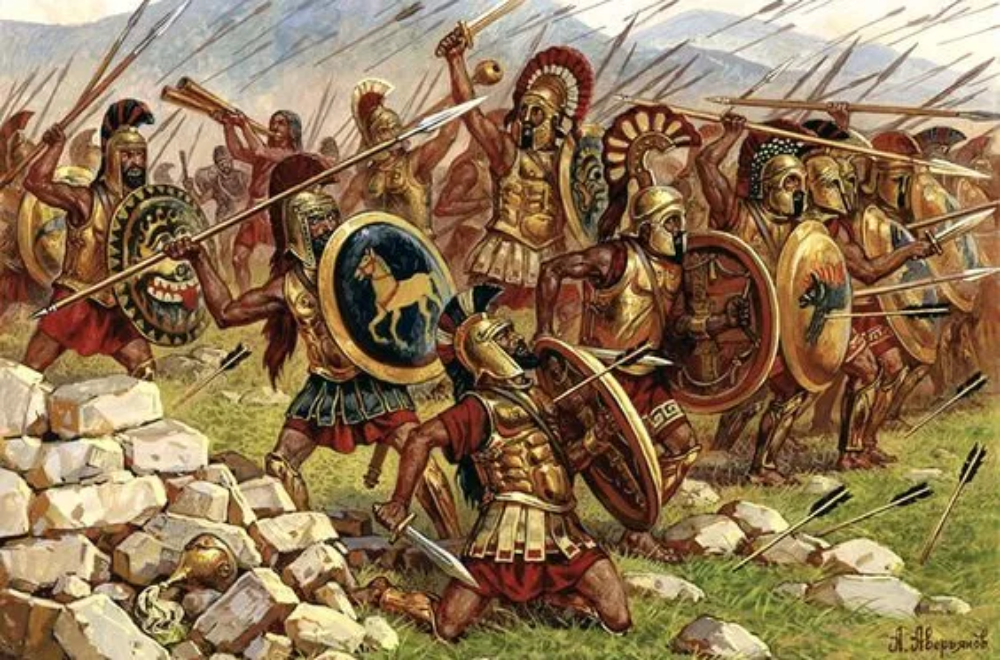
In 480 BCE, at the narrow pass of Thermopylae, 7,000 Greeks under King Leonidas confronted an army of perhaps 150,000 Persians. The geography turned the fight: mountains on one side, sea on the other, forcing the Persians into a bottleneck. For two days, the Greek phalanx held firm, killing thousands. Only betrayal—when a local revealed a hidden path—allowed the Persians to outflank them.
Terrain also shaped the sea battle at Salamis the same year. The Athenian general Themistocles lured Xerxes’ vast fleet into the cramped straits near Salamis. Greek triremes, smaller and more agile, rammed the disorganized Persian ships. The victory forced Xerxes to retreat.
The principle endures. In Afghanistan, mountains swallowed Soviet tanks. In Vietnam, jungles hid guerrillas. Modern militaries use frameworks like OKOCA to analyze terrain: obstacles, key points, cover, and avenues of approach.
Geography is not neutral—it is a weapon. From narrow passes to dense jungles, those who master the ground often master the war.
Combined Arms Maneuver (4th century BCE) – From Horses to Blitzkrieg
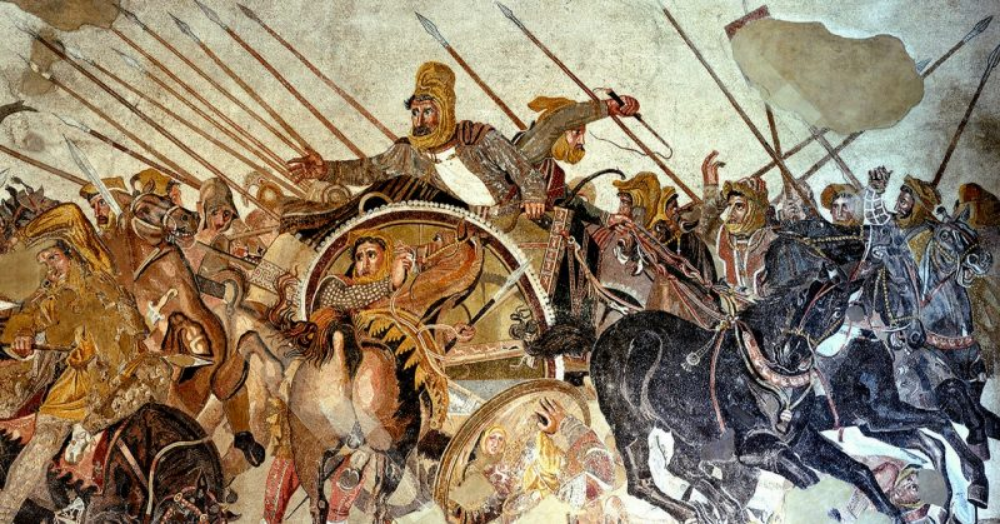
Alexander the Great transformed warfare by combining different forces into a single devastating system. His infantry phalanx held the enemy in place while his elite Companion Cavalry charged the flanks. At Issus and Gaugamela, this coordination shattered larger Persian armies.
The principle resurfaced in the 20th century as blitzkrieg. German generals fused tanks, mechanized infantry, artillery, and aircraft into lightning-fast assaults. In 1939, Poland fell in weeks. In 1940, France collapsed in six weeks. Speed, coordination, and shock achieved what numbers alone could not.
Today, combined arms extends beyond land and air. Cyber, drones, and information warfare now join tanks and planes. The essence remains: no arm fights alone. Strength comes from synergy.
Espionage and Intelligence (18th century BCE) – The Oldest Profession in War
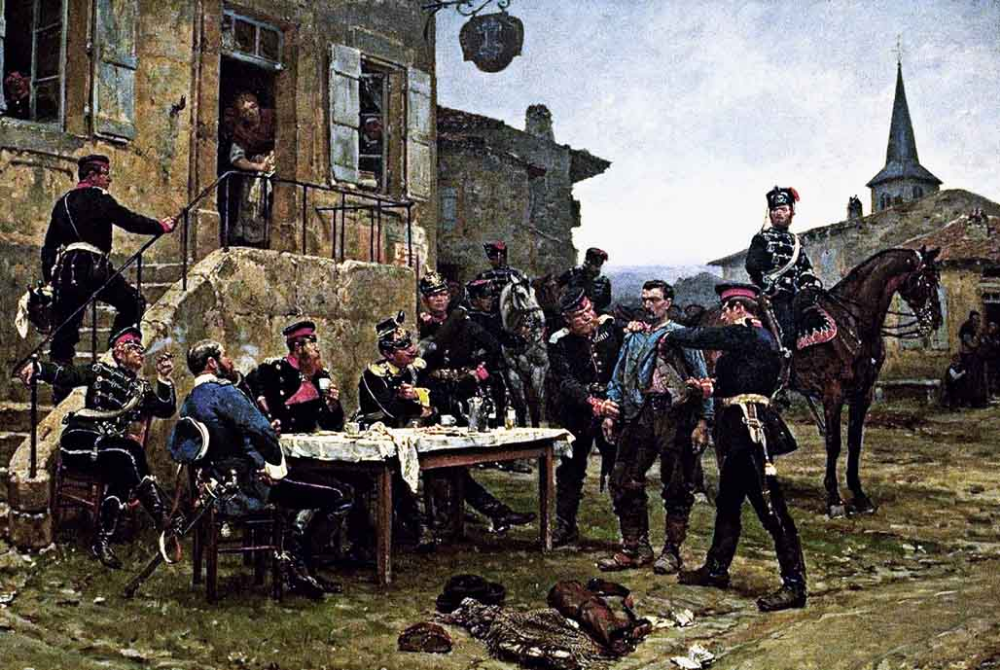
Around 1750 BCE, a Babylonian tablet recorded a spy’s report to King Hammurabi—the oldest known intelligence document. From the start, rulers knew that information could be deadlier than swords.
Sun Tzu devoted an entire chapter of The Art of War to spies. In Rome, informants and scouts fed generals critical data. The Greeks used deception, from false deserters to tricks like the Trojan Horse.
In modern times, espionage became institutionalized. Britain’s MI6, America’s CIA, and Israel’s Mossad built global networks. Satellites scan continents, drones hover unseen, and cyber operations infiltrate secure systems.
The methods have changed, but the principle is eternal: to know the enemy is to control the battle before it begins.
